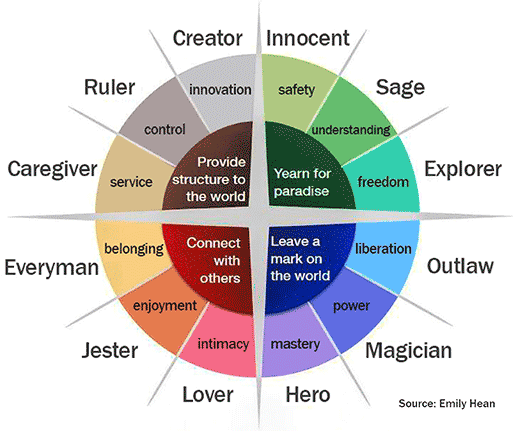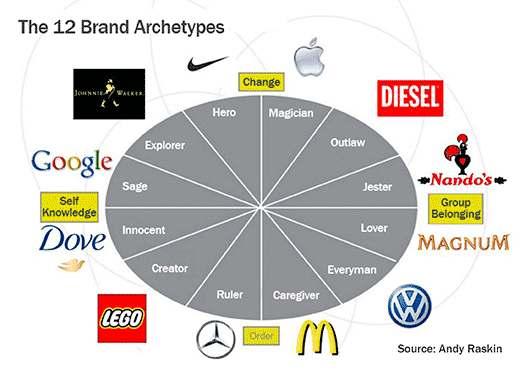The QSP Trap and How Manufacturers Can Achieve Effective Brand Differentiation
Is your brand victim to the most common brand positioning trap that captures manufacturers? Find out and learn how to achieve effective brand differentiation in the process.
#brandbuilding
By Carman Pirie
https://www.linkedin.com/in/pirie/
Co-founder
Kula Partners
Made for Manufacturers
There is one common brand positioning trap that captures more manufacturers than any other. In fact, the trap is so commonplace that many actually believe it is folly to not fall into it.
Ask most manufacturers to define what sets them apart from their competitors, and the response you will get back is almost invariably some combination of the following:
“We have been making the best quality ____ for more than ____ years.”
“We deliver excellent customer service.”
“We have the best, most passionate people.”
And sometimes these three points are just combined and succinctly presented as:
“We are the leader in ____”, or “We have been the leading ____ manufacturer for more than ___ years.”
And there it is. The QSP trap is set. When pressed further, these manufacturers will often struggle to clearly articulate any sort of competitive differentiation. When asked for proof points to demonstrate leadership—clear superiority in either product quality, customer service, or personnel—they find themselves similarly challenged for words.
But what’s so bad about having the best quality, excellent service and awesome people? Beyond the difficulty of objectively substantiating these claims, when every company says the same thing, it all falls on deaf ears. Today’s B2B buyers are, too often, being presented with a sea of sameness as they survey their buying options. And unfortunately, the path from sameness to commodity is awfully short.
In falling into the QSP trap, manufacturing marketers are failing on their most foundational job: they are failing to position their brand in a way that's unique, differentiated, and consistently expressed. And failing on that makes everything else harder. Indeed, as positioning pioneers Al Ries and Jack Trout said over 3 decades ago, good marketing is built on good positioning.
Brand Positioning in Modern Marketing
With the rise of digital, manufacturing marketers are managing more channels than ever. This often means larger marketing teams comprised of more individuals managing different brand touchpoints.
These variables make achieving a consistent brand voice across channels more challenging than ever — especially when a brand’s positioning is unclear or poorly articulated to begin with. Without a true north that’s universally understood by everyone communicating on behalf of the brand, and with dozens of channels demanding different content considerations, the result is often a brand voice that is scattered, disjointed, and easily dismissed by the brand’s audience.
So, what makes for an effective brand position?
Good brand positioning articulates what differentiates your company and helps your audience effectively categorize and remember your brand. That said, the key to articulating your brand’s differentiation may not necessarily be what you sell, but rather, how you sell it. In other words, you must create differentiation in the brand image you project.
This requires creating and adhering to a unique, consistent brand story that separates your brand from the competition. One of the most effective approaches to accomplishing this has been used by leading B2C brands for decades but largely ignored by B2B brands (and manufacturers, in particular) until recently.
This approach involves the use of archetypes.
Using Archetypes for Effective Branding
In relation to branding, an archetype refers to an identity that’s assigned to a brand using symbolism. Archetypes are based on a theory developed by Carl Jung, a Swiss psychologist, which suggests that humans have an innate tendency to use symbolism to understand concepts. Jung identified 12 categories of archetypes, each with a powerful identity comprised of its own characteristics, values, attitudes, and behaviors. These archetypes have been found to be recognized across cultures on a subconscious level.

Source: Emily Hean
You’ll instantly recognize these archetypes in relation to the characters that make up our favorite stories in literature and film.
It’s well known that the tendency to recognize patterns — whether or not they truly exist — is a human instinct. Simultaneously, archetypes are universally and unconsciously recognized.
When archetypes are leveraged in the context of positioning a brand, this combination can make for a powerful means of connecting with your audience. By anchoring your brand to something which is universally and unconsciously recognized, the brand becomes easier to identify. Further, this practice can help you forge deeper connections with your audience because they can use what they know about your archetypes to fill in the blanks.
Consumer brands have been leveraging the power of archetypes in their marketing for decades. This has allowed brands with similar products to achieve real differentiation in the minds of their consumers, along with building brand loyalty.
Take two examples in the automotive space. Mercedes Benz is a textbook example of a brand that uses the Ruler archetype to connect with its audience. Through the eyes of the Ruler archetype, the world is a place in which authority exists and some are superior to others. Car buyers don’t buy a Benz because of its gas mileage or crash test rating — they buy so that others will understand their status without saying a word. In contrast, VW embodies an Everyman archetype, which projects a friendly, unpretentious, reliable identity.

Source: Andy Raskin
A brand archetype, however, is only as good as its application. In order to leverage this powerful practice to achieve a strong, differentiated brand positioning, brands must not only be consistent at presenting a single archetype, but choose an archetype that is distinct from their competition.
This is where the opportunity for true differentiation exists. By analyzing not only the competition, but the larger landscape in which a brand operates, marketers should select a brand archetype that will set them apart in their space.
Once a sufficiently differentiated archetype is selected, its consistent application is paramount.
A brand’s archetype should influence all marketing and brand decisions, with marketers asking themselves, “what would [insert archetype] do?”. The tone, language, values, beliefs, and characteristics associated with the archetype should be present in every brand touch point and piece of marketing.
The good news is that having an archetype defined is a critical first step to achieving consistency across individual communicators and communication channels. Having a true north which is innately recognized by not only the audience, but by those communicating, helps make that possible. It helps focus individual efforts so that regardless of who is creating, or what channel they’re creating for, the brand archetype’s voice comes through. A defined archetype also provides objective criteria for reviewing and assessing all marketing and communications material.
Brand Archetypes and Profitability
Beyond achieving brand differentiation and consistency for their own sake, the benefit of using archetypes in brand positioning can be quantified.
Mark and Pearson, authors of The Hero and the Outlaw, studied the use of archetypes among 50 well-known corporations and found a correlation between the use of archetypes in branding and higher profitability. In their study, they divided the corporations based on which brands’ archetypal identities were “tightly defined” and which brands’ identities were “confused.”
Over a 7-year study, Mark and Pearson explored changes in two factors among these brands:
- Market Value Added (MVA): a measure of the value a company adds to shareholder investment
- Economic Value Added (EVA): an estimate of net operating profit minus the opportunity cost of all capital invested in the enterprise
They found that: “The analysis showed that the MVA of those brands strongly aligned with a single archetype rose by 97% more than the MVA of confused brands. Also, over the six-year period under study, the EVA of strongly aligned brands grew at a rate 66% greater than that of the EVA of weakly aligned brands.”
This means that brands that maintained a single, consistent archetype were more profitable than brands that didn’t. The authors concluded, “We now know that brands that consistently express an appropriate archetype drive profitability and success in real and sustainable ways.”
Source: Mark, Margaret and Pearson, Carol S., The Hero and the Outlaw, New York: McGraw Hill, 2001. page 29.
Differentiate Your Manufacturing Brand and Avoid the QSP Trap
Quality. Service. People. While these factors are necessary to running any functioning business, they’re not what will help your manufacturing brand stand out in your buyers’ minds. Instead of competing in a sea of sameness, make your manufacturing brand memorable by tapping into an innate part of the human psyche.
By employing the power of archetypes in brand positioning, B2B manufacturers can avoid the QSP trap and differentiate themselves from the competition. This practice not only enables greater marketing consistency and efficiency — it also drives bottom line results.
Need more information?
By Carman Pirie
https://www.linkedin.com/in/pirie/
Co-founder
Kula Partners
Made for Manufacturers
1741 Brunswick Street, Penthouse
Halifax, Nova Scotia
B3J 3X8
902-832-0244
About the Author
Carman Pirie
Carman Pirie is the co-founder of Kula Partners, an agency that helps leading B2B manufacturers craft digital experiences that transform how they engage buyers, serve customers, and outpace their competition online. Carman is also co-host of The Kula Ring manufacturing marketer podcast.
Over his nearly three decades in marketing and communications, Carman’s career has taken him from the halls of Canada’s Parliament to client- and agency-side marketing leadership roles. Along the way, he has advised Fortune 100 clients, governments, and non-profit organizations.
At Kula Partners, Carman serves as lead marketing and sales counsel to the firm’s diverse range of North American manufacturing clients. His unique insights and distaste for the ordinary have earned him a Gold Award for Media Innovation from Marketing Magazine and Kula Partners—Canada’s first Platinum HubSpot agency—has been recognized as a top lead generator among HubSpot partners.
RELATED CONTENT
-
Shifting Landscape of Technology Is a Never-Ending Education
Brent Donaldson, Senior Editor, Modern Machine Shop and Additive Manufacturing Magazine discusses how the shifting landscape of technology that all of Gardner’s writers and editors cover is a never-ending education. If we are truly doing our jobs, we will never feel like we’ve mastered them. As I continue writing and reporting for AM and MMS, it’s easy to imagine how these technologies’ interdependency will continue to grow. It also seems clear that this kind of reporting — the kind that requires editors to experience and share new manufacturing technologies and strategies — is the kind of reporting that only Gardner can produce with any depth. I’m grateful to be part of it.
-
How to Write a B2B Marketing Email That Works
B2B copywriter David McGuire shares four tips to help stand out in a crowded inbox. He tries to stick to these four key principles when writing emails.
-
26 Relevant Print Marketing Statistics: 2022 Ad Spending & Impact
Print marketing is not dead. Its impact on consumer brand recall and purchase decision is worth considering, especially if you want to implement an integrated, multi-channel approach to your marketing strategy. This article on marketing trends and predictions can provide more insights on strategies you can use for your business or marketing clients.


